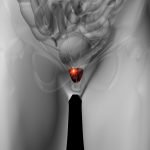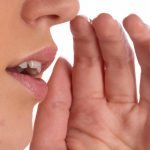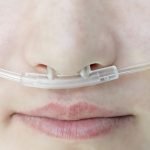It Is Never Too Late for a New Beginning
Helen Healy, ND
Five months ago, I met Shirley, the 66-year-old mother of one of my dear patients. She came to me because she wanted “to get healthier.” She was concerned about her belly fat, hot flashes, cholesterol level, dry eyes, and ear dandruff.
She began the visit by telling me her history of gallstones and large uterine fibroid tumors that were surgically removed at the age of 37 years. In her 40s, she developed hypertension and was prescribed medication. At ages 53 and 57 years, she was treated for basal cell carcinoma, and the following year she had her bladder repaired and ovaries removed. She was put on hormone replacement therapy for her hot flashes, and over the years her physician added more prescriptions. By the time I met Shirley, she was on metoprolol, benazepril hydrochloride–hydrochlorothiazide, gemfibrozil, a baby aspirin, and acetaminophen.
Shirley had discomfort in her intestines (heartburn, hemorrhoids, rectal itching, gas, and bloating) and in her musculoskeletal system (aching muscles, sore joints, tender points, and backaches). Also, she was a worrier.
Shirley had kept a diet diary for me of 3 days of meals. Every day started with orange juice, wheat toast with butter, skim milk, an egg, and sometimes slices of turkey bacon. Lunches usually included macaroni or bread, with potato salad or clam chowder, or a burger, along with a brownie. Snacks would be cookies and milk. Dinner comprised hamburger goulash or chicken strips, pasta or bread, butter, jelly, peas or corn, skim milk, and cookies.
Her MD had said she was prediabetic (her fasting glucose level was 105 mg/dL). Her lipid panel revealed the following levels: total cholesterol at 214 mg/dL, triglycerides at 367 mg/dL, high-density lipoprotein cholesterol at 34 mg/dL, and low-density lipoprotein cholesterol at 106.4 mg/dL. She showed me 7 days’ readings of her blood pressure, for which she was taking medication: none had a systolic reading at or below 120 mm Hg, and 2 readings were at or above 134 mm Hg.
At a height of 5 ft and 5 in, she weighed 188.8 lb (47% was fat), with a waist circumference of 40 in and hips at 46 in. Her waist to height ratio was 0.62, which along with the other nonanthropometric variables was suggestive of metabolic syndrome.
Undeterred, Shirley was ready for a plan of action. She wanted to lose 44 lb, so we put that as the first goal. I drew a simple diagram to help her with food portion size and suggested that she start seeing her meals as the size of 4 fistfuls plus 1 thumb: 1 fistful for her protein, 1 fistful for her nongluten grains, 2 fistfuls for colorful vegetables, and 1 thumb’s worth of nuts, seeds, or oil. Daily snacks were to constitute various colorful fruits and berries, to replace the cookies and milk.
She knew that she needed more water and less of the “sugar-free artificial drink powder” she was consuming. I suggested she drink small amounts of water every 2 hours to hydrate and wash toxins out of her system, with the goal being that she would build up to 10 oz of water at a time.
We discussed increasing her exercise because she was not doing much. She could not keep up with her husband walking, nor had she ridden her bike in 3 years. I suggested using the elliptical machine for starters, with which she could burn calories without so much impact on her joints.
My final suggestions involved 3 supplements to give her mitochondrial support for increased energy and to promote weight loss: l-carnitine (started at 500 mg/d and increased steadily until she noticed a shift in her energy), coenzyme Q10 (100 mg twice a day), and alpha lipoic acid (400 mg/d).
Shirley got right to work cutting back on sugar, going gluten free, increasing her vegetables and fruits, and stopping the morning orange juice. At our 2-month follow-up appointment, her blood pressure had decreased to 108/58 mm Hg, and her weight was 178.6 lb, with 46% fat. She said she was moving better and could now keep up with her husband.
My next addition to her treatment plan centered on her lifting weights. Safe abdominal exercises were also recommended.
Three months later, we had our third conversation, when she was down South for the season. She said that she was able to do 60 or more sit-ups daily, ride her bike 16 miles a week, and easily keep up with her husband on walks. Her heartburn was gone, as was the rectal itching and most of her muscle aches. Her weight had dropped to 165 lb, her triglycerides level was down to 161 mg/dL (a 54% reduction), her waist measured 36.5 in, and her hips were 43 in. She said her family was happy and very proud of her and wanted her to keep up the good work. Her MD was very pleased and stated that she was no longer prediabetic and had reduced one of her medications by half.
Shirley, now age 67 years, still has about 20 lb to lose to reach her goal, and I have much more to offer her to help her with her other unaddressed complaints. It is very gratifying to see how much patients can do for themselves, no matter what their age, when given some clear guidelines and appropriate nutritional supplementation.
 Helen C. Healy, ND received her bachelor’s degree in biopsychology from Vassar College, Poughkeepsie, New York, in 1977, and her ND degree from National College of Naturopathic Medicine, Portland, Oregon, in 1983. She is a founding member of the American Association of Naturopathic Physicians (AANP) and has served the profession in the capacities of AANP board member and speaker of the House of Delegates, president of the Minnesota Association of Naturopathic Physicians, and chair of the Registered Naturopathic Doctor Advisory Council to the Minnesota Board of Medical Practice. Dr Healy practices at Wellspring Naturopathic Clinic in Saint Paul, Minnesota, and can be reached at [email protected].
Helen C. Healy, ND received her bachelor’s degree in biopsychology from Vassar College, Poughkeepsie, New York, in 1977, and her ND degree from National College of Naturopathic Medicine, Portland, Oregon, in 1983. She is a founding member of the American Association of Naturopathic Physicians (AANP) and has served the profession in the capacities of AANP board member and speaker of the House of Delegates, president of the Minnesota Association of Naturopathic Physicians, and chair of the Registered Naturopathic Doctor Advisory Council to the Minnesota Board of Medical Practice. Dr Healy practices at Wellspring Naturopathic Clinic in Saint Paul, Minnesota, and can be reached at [email protected].








